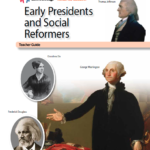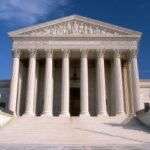In this lesson, students will read about a Kansas child involved in a famous United States Supreme Court case. They will think critically to form opinions about equality, segregation, and integration, and will distinguish between fact and opinion.
The Power of Nonviolence: Rosa Parks: A Quest for Equal Protection Under the Law
This lesson asks students to revisit the well-known story of a figure in the civil rights movement–Rosa Parks–through the primary source documents associated with her arrest in 1955. The arrest occurred in the shadow of the Supreme Court decision in Brown v. Board of Education of Topeka, Kansas (1954) and had a powerful impact on the public policy of segregation and the application of the equal protection clause of the Fourteenth Amendment.
Different Perspectives on the Civil Rights Movement
Anthony Badger uses the career of President Jimmy Carter to frame the questions of change in the American South and the relative impact that economic modernization, nonviolent protest, and armed self-defense had on the end of segregation and the steps taken toward political and social equality. Free registration for students and teachers required to access resource.
Brown v. Board of Education (1954) eLesson
After the Civil War, the 14th Amendment was passed to grant citizenship to former slaves and protect them from civil rights violations in their home states. Public schools were relatively rare throughout the United States, but were often segregated by race where they existed. The same Congress that passed the 14th Amendment created racially segregated schools for the District of Columbia. In the 20th century, the National Association for the Advancement of Colored People (NAACP) began a litigation campaign designed to bring an end to state mandated segregation, calling attention to the shabby accommodations provided for blacks, as well as arguing the damaging psychological effects that segregation had on black school children. One case was brought on behalf of Linda Brown, a third-grader from Topeka, Kan.
Untold Stories: Changemakers of the Civil Rights Era
iCivics presents a series of short, animated videos that examine the actions and accomplishments of civil rights activists of the 1950s and ’60s. Barbara Johns, Constance Baker Motley, and J.D. and Ethel Shelley, these figures probably haven’t made it to your textbook, and yet their contributions have helped shape our nation in insurmountable ways. Videos are assignable, end with questions for generating classroom discussion, and come with a downloadable Teacher’s Guide. Visit a video’s lesson page to view or assign it and access the guide.
African American History Month Resources
African American History Month evolved from the birthdays of Abraham Lincoln and Frederick Douglass in the second week of February. Historian and author Dr. Carter G. Woodson framed the concept that became the first Negro History Week in February 1926. It developed into a monthlong commemoration of the struggles and triumphs of the African American community. On this page, learn the stories of Autherine Lucy Foster, the first African American student to attempt to integrate the University of Alabama; Frank M. Johnson, Jr., the federal judge who ruled in the Rosa Parks case; and Linda Brown, the 9-year-old who became the face of children caught in the crossfire of the fight for social change. The Pathways to the Bench video series features profiles of African American federal judges who offer perspectives on their experiences during the Civil Rights era.
60-Second Civics Podcasts
60-Second Civics is a podcast that provides a quick and convenient way for listeners to learn about our nation’s government, the Constitution, and our history. The podcast explores themes related to civics and government, the constitutional issues behind the headlines, and the people and ideas that formed our nation’s history and government. The show’s content is primarily derived from the Center for Civic Education’s education for democracy curricula, including We the People: The Citizen and the Constitution, Foundations of Democracy, and Elements of Democracy. It’s easy to subscribe! Listen on iTunes or Stitcher or subscribe via RSS.
Shaw v. Reno (1993)
Did the North Carolina residents’ claim that the 1990 redistricting plan discriminated on the basis of race raise a valid constitutional issue under the 14th Amendment’s Equal Protection Clause? North Carolina drew legislative districts to create a majority black district.
American Reformers (CKHG Unit)

This unit (the second part of Early Presidents and Social Reformers) focuses on the efforts to improve American society in the early 1800s. Across 6 lessons, students learn about the temperance movement, free public education, the abolitionists’ crusade to abolish slavery, and the early women’s rights movement. The unit explores early reformers’ legacy in ongoing modern-day struggles for equality and civil rights.
An Independent Judiciary: Cherokee Nation v. Georgia and Cooper v. Aaron

This documentary explores the Supreme Court cases Cherokee Nation v. Georgia (1831) and Cooper v. Aaron (1958) that defined our understanding of the role of the judiciary. In Cherokee Nation, the Supreme Court ruled it lacked the jurisdiction to review the claims of an Indian nation in the U.S. In Cooper v. Aaron, the Court affirmed that its interpretation of the Constitution was the “supreme law of the land” and that states were bound by its decisions. A PDF lesson guide is provided.